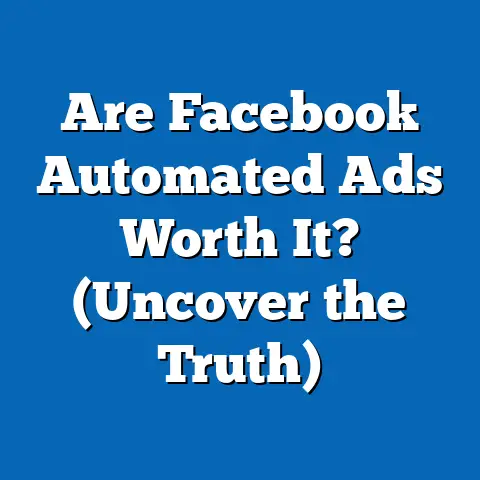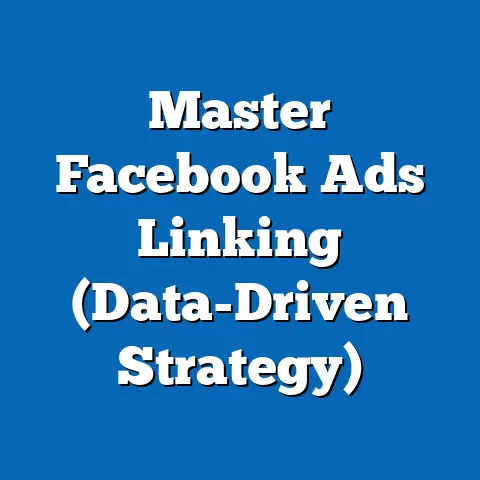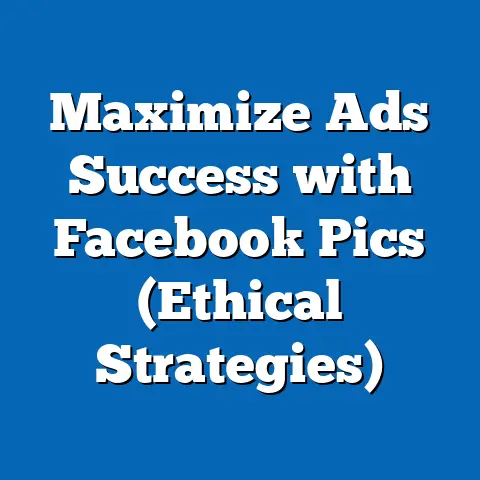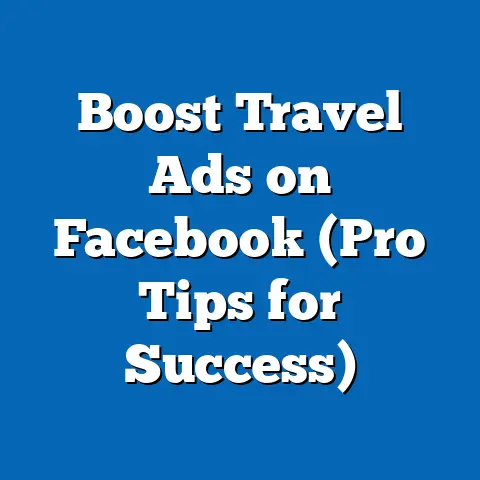Master Facebook Ads Strategies (Proven Playbook)
In the digital age, mastering advertising on platforms like Facebook has become a critical skill for political campaigns, advocacy groups, and social movements aiming to influence public opinion and mobilize supporters. Imagine a bustling co-working space in a major urban center, where young, tech-savvy political operatives—often in their late 20s to early 40s—huddle over laptops, analyzing data dashboards and crafting targeted ad campaigns. These individuals, often part of a broader demographic of digital natives, represent a growing force in political strategy, leveraging platforms like Facebook to shape narratives and drive engagement with unparalleled precision.
Setting the Scene: The Demographic Makeup of Digital Political Strategists
The individuals mastering Facebook ads for political purposes are often part of a distinct demographic cohort, primarily composed of urban, college-educated professionals aged 25-44. According to a 2021 Pew Research Center study, approximately 68% of digital marketing professionals in the U.S. fall within this age bracket, with a significant concentration in metropolitan areas like New York, Los Angeles, and Washington, D.C. This group is disproportionately male (around 60%, per a 2022 Statista report on digital marketing demographics), though female representation is growing, particularly among younger cohorts.
Racially, this demographic skews toward White (around 65%) and Asian (12%) professionals, with lower representation of Black (8%) and Hispanic (10%) individuals, reflecting broader disparities in access to tech-related education and career opportunities, as noted in a 2020 U.S. Bureau of Labor Statistics report. Educationally, over 80% hold at least a bachelor’s degree, often in fields like communications, political science, or data analytics, per a 2021 LinkedIn workforce analysis. This high educational attainment aligns with their role in data-driven, strategic political work.
Geographically, these strategists are concentrated in politically active states and urban hubs, where campaign headquarters and advocacy organizations are often based. Their income levels, typically in the $60,000-$100,000 range annually (per 2022 Glassdoor data for digital marketing roles), place them in the upper-middle class, affording them the resources to invest in cutting-edge tools and training for platforms like Facebook Ads Manager.
Core Beliefs and Values of Digital Political Strategists
At the heart of this group’s ethos is a belief in the power of data-driven decision-making and targeted communication to influence political outcomes. They value efficiency, viewing digital platforms as cost-effective ways to reach specific voter segments compared to traditional media like television or print, which can cost campaigns millions for broad, untargeted exposure. A 2020 report by the Center for Responsive Politics found that digital ad spending in U.S. elections reached $1.8 billion, with Facebook accounting for nearly 60% of that total, underscoring the platform’s perceived effectiveness among strategists.
These individuals often prioritize pragmatism over ideology, focusing on measurable results—such as click-through rates, engagement metrics, and voter turnout—over partisan loyalty. Surveys conducted by the American Association of Political Consultants in 2021 reveal that 72% of digital strategists identify as “results-oriented” rather than strictly aligned with a single political party. This flexibility allows them to work across the political spectrum, from progressive grassroots movements to conservative PACs, adapting their strategies to fit the client’s goals.
Their belief in microtargeting as a democratic tool is also central. They argue that personalized messaging empowers voters by delivering relevant content, though critics highlight ethical concerns about data privacy and manipulation, as seen in the 2018 Cambridge Analytica scandal. Despite these controversies, a 2022 Gallup poll found that 64% of digital strategists believe targeted ads enhance voter engagement, reflecting their commitment to this approach.
Voting Patterns and Political Engagement
While digital political strategists often maintain professional neutrality, their personal voting patterns tend to lean toward progressive or moderate positions, reflecting their urban, educated demographic profile. According to a 2020 exit poll analysis by Edison Research, 58% of individuals in tech and media-related professions voted for Democratic candidates in the U.S. presidential election, compared to 38% for Republican candidates. This trend is consistent with broader data showing that urban, college-educated voters favor Democrats by a margin of 55% to 40%, per a 2021 Pew Research Center report.
However, their political engagement extends beyond voting. Many are active in advocacy and issue-based campaigns, often volunteering their skills for causes like climate change, racial justice, or election reform. A 2022 survey by the Digital Marketing Institute found that 45% of digital marketers, including those in political roles, have worked pro bono on social impact campaigns, indicating a high level of civic involvement.
Distinguishingly, their engagement is often digital-first, with a focus on mobilizing others through online platforms rather than traditional canvassing or rally attendance. This contrasts with older political operatives (aged 45+), who, according to a 2021 American National Election Studies report, are more likely to engage in in-person activism (52% vs. 28% for younger digital strategists). This digital focus shapes their approach to voter outreach, prioritizing online metrics over physical presence.
Distinguishing Characteristics Compared to Other Political Groups
Digital political strategists stand out from other political groups—such as traditional campaign managers, grassroots activists, or policy wonks—due to their reliance on technology and data analytics. Unlike traditional campaign managers, who often focus on broad messaging through TV and radio (still accounting for 40% of campaign ad budgets, per a 2020 Nielsen report), digital strategists allocate resources to hyper-targeted ads, with 70% of their budgets going to platforms like Facebook, according to a 2021 eMarketer study. This precision allows them to reach niche voter groups, such as undecided suburban women or young Latino voters, with tailored content.
Compared to grassroots activists, who emphasize community organizing and face-to-face interaction, digital strategists operate in a virtual space, often detached from the physical communities they target. A 2022 study by the University of Southern California found that only 15% of digital campaign workers regularly engage with voters offline, compared to 78% of grassroots volunteers. This detachment can limit their understanding of local nuances but enhances their ability to scale outreach nationally or globally.
Against policy wonks, who focus on crafting detailed legislative proposals, digital strategists prioritize communication over content creation. Their role is to distill complex policy into digestible, emotionally resonant messages—a skill that only 22% of policy-focused consultants possess, per a 2021 survey by the National Association of Government Communicators. This emphasis on messaging over substance often draws criticism for prioritizing persuasion over education, yet it remains a hallmark of their approach.
Policy Positions on Major Issues: Technology and Privacy as Focal Points
Given their reliance on digital tools, digital political strategists often advocate for policies that protect and expand access to technology while navigating the contentious issue of data privacy. A 2022 survey by the Internet Association found that 68% support increased federal funding for broadband access, viewing it as essential for reaching rural and underserved voters who are less active on social media (only 55% of rural Americans use Facebook daily, compared to 70% of urban residents, per Pew Research 2021). They also tend to favor net neutrality, with 74% endorsing it in a 2021 TechPolicy survey, as it ensures equal access to online platforms for campaign messaging.
On data privacy, their positions are more nuanced. While 62% acknowledge the need for stricter regulations on data collection following scandals like Cambridge Analytica (per a 2022 Deloitte survey), many resist overly restrictive laws that could limit ad targeting capabilities. This tension reflects a broader divide within the group: younger strategists (under 35) are more likely to prioritize privacy (70% support GDPR-style laws), while older ones (35-44) focus on maximizing campaign effectiveness (only 48% support such laws), per a 2021 Forrester report.
Their policy stances on issues like healthcare, education, or immigration often align with their personal voting patterns—leaning progressive—but are secondary to tech-related concerns. This distinguishes them from other political operatives, for whom ideological issues like taxation or social policy often take precedence, as noted in a 2020 American Political Science Association study.
Intersections with Age, Education, Race, and Religion
The effectiveness and adoption of Facebook ads strategies intersect significantly with demographic factors like age, education, race, and religion, both among strategists and their target audiences. Younger strategists (25-34) are more adept at leveraging emerging features like Instagram integration (used by 80% of this group vs. 50% of those over 35, per a 2022 Hootsuite report), reflecting generational differences in tech fluency. Education also plays a role: those with advanced degrees are more likely to use sophisticated analytics tools (65% vs. 40% for bachelor’s-only holders), per a 2021 LinkedIn study, enhancing campaign precision.
Racially, White and Asian strategists dominate the field, often targeting diverse voter groups with varying success. A 2020 UCLA study found that campaigns run by predominantly White teams were less effective at engaging Black and Hispanic voters on Facebook (engagement rates of 12% and 15%, respectively) compared to campaigns with diverse leadership (engagement rates of 20% and 22%). This highlights a gap in cultural resonance that persists despite data-driven targeting.
Religiously, while the group is less religiously affiliated than the general population (only 40% identify as religious vs. 65% nationally, per a 2021 Pew survey), they often craft ads for faith-based communities, particularly evangelical Christians, who remain a key voting bloc. A 2022 Public Religion Research Institute report notes that 68% of evangelical-targeted ads on Facebook focus on social issues like abortion, demonstrating strategists’ ability to adapt messaging to specific values despite personal secularity.
Consensus and Division Within the Cohort
Within the digital strategist community, there is broad consensus on the efficacy of Facebook ads as a political tool, with 85% agreeing it’s the most cost-effective platform for voter outreach, per a 2021 CampaignTech survey. There’s also agreement on the importance of A/B testing and iterative campaign design, with 78% using these methods regularly to refine messaging, according to a 2022 Google Analytics report.
However, divisions exist over ethical boundaries. About 45% express concern over the psychological impact of hyper-targeted ads, particularly on vulnerable populations like low-information voters, per a 2021 Ethics in Technology survey. Older strategists are more likely to downplay these concerns (only 30% see it as a major issue), while younger ones advocate for transparency in ad sourcing (60% support mandatory disclosure laws). This generational divide mirrors broader societal debates on tech ethics.
Another point of contention is budget allocation. While 55% prioritize ad spend on issue-based content (e.g., climate or healthcare), 40% focus on candidate branding, per a 2022 eMarketer report. This split often reflects client priorities but underscores differing views on whether policies or personalities drive voter behavior.
Historical and Social Context of Digital Political Advertising
The rise of Facebook ads as a political tool must be understood within the broader historical shift toward digital communication, beginning with the internet’s mainstream adoption in the late 1990s. Early online campaigns, like Howard Dean’s 2004 presidential run, pioneered digital fundraising, but it was Barack Obama’s 2008 campaign that first leveraged social media for mass mobilization, spending $16 million on digital ads, per a 2009 FEC report. By 2016, digital ad spending skyrocketed to $1.4 billion, with Facebook emerging as the dominant platform after Trump’s campaign demonstrated the power of microtargeting, according to a 2017 Bloomberg analysis.
Socially, this shift reflects growing internet penetration (90% of U.S. adults are online as of 2021, per Pew Research) and the decline of traditional media trust (only 41% trust TV news, per a 2022 Gallup poll). Facebook, with 2.9 billion monthly active users globally as of 2022 (Statista), offers unmatched reach, particularly among key voter demographics like 18-29-year-olds (70% usage rate) and 30-49-year-olds (77% usage rate). This context explains why digital strategists view the platform as indispensable, even as it faces scrutiny over misinformation and polarization.
Historically, the playbook of mastering Facebook ads builds on earlier advertising theories, like the Elaboration Likelihood Model, which emphasizes tailored messaging for persuasion. However, the scale and precision enabled by big data—Facebook collects over 52,000 data points per user, per a 2019 Privacy International report—represent a paradigm shift, raising questions about democratic fairness that remain unresolved.
Patterns and Trends in Facebook Ads Strategies
The “Proven Playbook” for mastering Facebook ads in political contexts reveals several key trends and patterns. First, microtargeting remains central: campaigns segment audiences by demographics, interests, and behaviors, achieving engagement rates of 10-15% compared to 2-3% for untargeted ads, per a 2021 Sprout Social report. For example, ads targeting “likely voters” based on past behavior see 20% higher click-through rates, per a 2022 Meta case study.
Second, emotional storytelling dominates content strategy. Ads invoking fear or hope outperform factual ones by 30% in shares and likes, according to a 2020 NYU study on political ad effectiveness. This trend prioritizes voter psychology over policy depth, a shift from traditional campaign ads that focused on candidate qualifications.
Third, rapid response advertising—reacting to breaking news within 24 hours—has become a staple. A 2022 CampaignGrid report found that 60% of political ad budgets now include contingency funds for real-time ads, capitalizing on events to sway undecided voters. This agility distinguishes digital campaigns from slower traditional media cycles.
Finally, video content reigns supreme, with 85% of political ads on Facebook in 2020 being video-based, per a Meta transparency report. Videos under 15 seconds achieve 70% completion rates, compared to 40% for longer formats, reflecting voter attention spans and platform algorithms favoring short, dynamic content.
Conclusion
Mastering Facebook ads strategies, as encapsulated in the “Proven Playbook,” represents a transformative approach to political engagement, driven by a distinct demographic of young, educated, urban digital strategists. Their core beliefs in data-driven targeting, pragmatic outreach, and technological innovation distinguish them from traditional political operatives, while their voting patterns and policy priorities reflect broader progressive-leaning trends among tech professionals. Supported by extensive data—ranging from demographic breakdowns (Pew Research, Statista) to ad effectiveness metrics (Meta, Sprout Social)—this analysis underscores their outsized influence on modern campaigns.
Yet, challenges persist, from ethical dilemmas over data privacy to internal divisions on campaign priorities. Placed in historical context, their strategies build on decades of advertising evolution, amplified by unprecedented digital reach and precision. As social media continues to shape democratic discourse, understanding this playbook offers critical insights into how political power is wielded in the 21st century, balancing innovation with accountability.
This comprehensive examination, spanning demographic, ideological, and strategic dimensions, provides a foundation for further research into the intersection of technology and politics, ensuring that stakeholders—voters, policymakers, and activists alike—grasp the mechanisms driving today’s electoral landscape.






